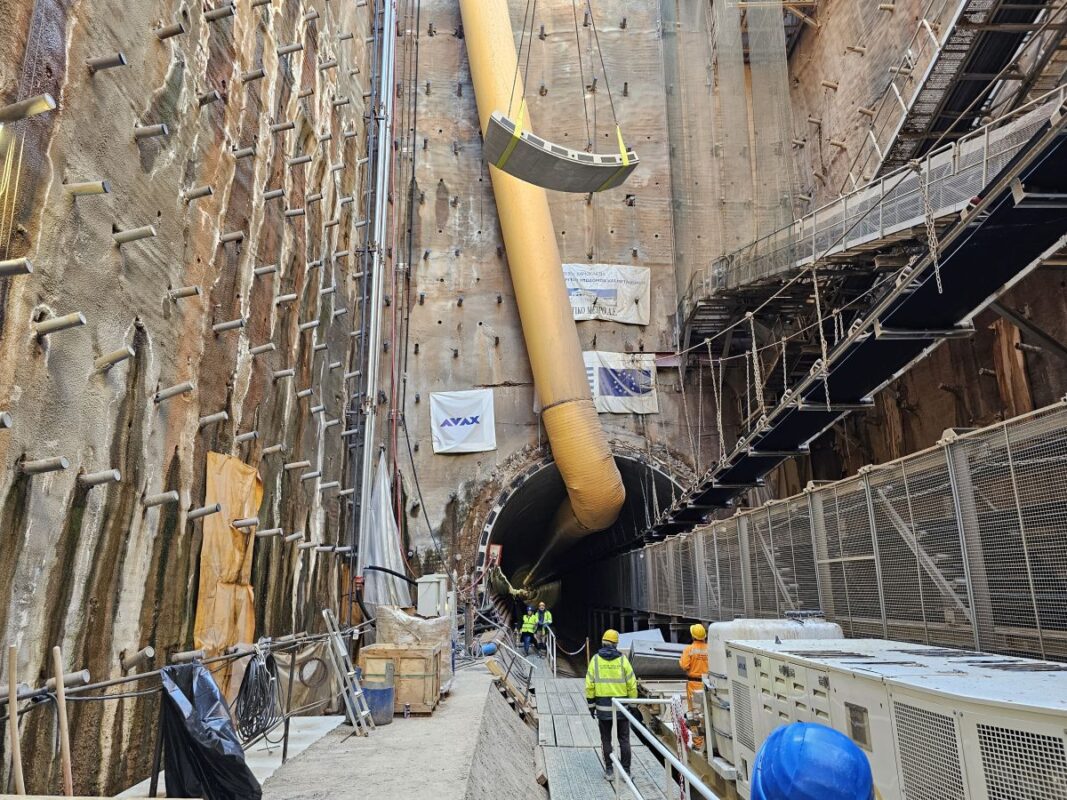One of the most important infrastructure needs in our country is metro projects. The metro, beloved in Athens like no other mode of transport and eagerly anticipated in Thessaloniki, is undoubtedly the most effective solution to the traffic problems in cities today. It also provides the most viable solution for reducing the use of private vehicles and decreasing air pollutant emissions.
Since 1992, over a period of approximately 32 years, we have seen the construction of about 45 stations for the Athens Metro, which have transformed transportation in the areas where they are located. In Thessaloniki, the impact is still awaited, but if all goes well, the first 13 stations will be operational by the end of the year, with another 5 to follow in 2025.
In the Athens Metro, we also have 15 stations under construction as part of a new line in the city center, as well as in the eastern and northern suburbs. Additionally, three more stations towards Ilion are in the tendering process. These 18 stations have secured funding (Line 4 as a bridge project, with the extension towards Ilion following).
What will happen with the projects in the future?
The conversation that is certain to open in the near or mid-term future is what we will do with the expansion projects in Athens and Thessaloniki. Based on the current data, Greece is constructing metro projects thanks to the financial tools offered by the European Union, predominantly through the NSRF (National Strategic Reference Framework).
However, the NSRF, like all similar tools, has specific funds allocated for each economic action and has certain limitations. Any metro projects we have seen in Greece have been supported by the successive programming periods of the European Union.
But how much longer can we rely on this valuable tool? The easy answer is, as long as it exists. The reasonable question that arises from now on is whether the NSRF is still sufficient for us. After 32 years since the first metro project began for Lines 2 and 3, the needs for metro systems in Athens and Thessaloniki appear to be growing, and demand is not only unmet but also expanding.
Today in Athens, the Ministry of Infrastructure and Transport and Attiko Metro are planning seven metro extensions with approximately 31 stations. Additionally, in Thessaloniki, a more expanded network with 26 additional stations was recently announced. Therefore, the current needs of the country amount to about 60 stations. In terms of money, this translates to approximately 7.5 billion euros, assuming a cost of around 120 million euros per station.
With the funding capabilities that the NSRF has for metro projects, it can cover an amount of approximately 1-1.5 billion euros per decade. This means that to complete all these projects in Athens and Thessaloniki, we would need about 40-50 years, which means meeting today’s needs by …2075.
Are there alternatives?
One might reasonably ask if there are alternative funding methods. Borrowing a phrase that has been used quite often lately, the certainty is that there are no “money trees”, so a more rational and practical approach to the matter is needed.
To tackle this puzzle, Attiko Metro has entered into an agreement with the consulting-engineering company Planet to conduct a preliminary study exploring funding options for new Athens Metro lines.
The results of this study will be particularly interesting as they will contribute to directing the implementation of metro projects that will not rely solely on funding from European sources.
The aim is to expedite the progress of the upcoming metro projects, whether they are in Athens or Thessaloniki, as the traffic monster, with each expansion that comes into operation, is constrained but resurfaces due to the continuous expansion of the urban complexes of the two cities.
Tools such as concessions or PPPs do not seem to have much utility as they are not widely applied in Europe. In Greece, PPP projects have also reached a ceiling. Therefore, the direction this study will take is of particular importance and value, as it may open up some new financing possibilities.
What are the metro projects that are currently under implementation
The metro projects currently in the planning stages for the Greek Metro in Athens and Thessaloniki are numerous, but there is not enough funding available to see them completed in the near future.
In Athens, there are planned extensions for Line 4: towards Maroussi-Lykovrysi with 10 stations, towards Petroupoli with 6 stations, the branch towards Dafni-Ilioupoli with another 3 stations, the new branch of Line 1 towards the Cultural Center with 4 stations, the extension of Line 1 towards Varybobi with 2 stations, the extension of Line 2 towards Menidi with 3 stations, and the extension towards Glyfada with 3 stations
A few days ago in Thessaloniki, a new, second line was introduced. It will include a total of 17 new stations over 18.41 km and will operate between Upper Efesos or Kordelio-Agia Kyriaki. It will have two branches: The first branch runs from the New Railway Station to Efesos. The second western branch also starts from the New Railway Station and extends to Kordelio.
Additionally, there is a planned extension northwestward from the DEMOKRATIAS station, reaching Papageorgiou Hospital with 6 stations and 7.96 km. Finally, an extension towards the airport is also envisaged with a slightly altered route. It will be a continuation of the branch towards Kalamaria and will include 6 stations and 8.72 km.
What is certain is that examining a possible solution is necessary to advance the implementation of metro projects in our country at a faster pace and to cover more areas in Athens and Thessaloniki.
For more details and the complete article in greek, click here
ΜΗΝ ΞΕΧΑΣΕΤΕ
- Ακολουθήστε το ypodomes.com στο Google News και μάθετε πρώτοι όλες τις ειδήσεις για τις υποδομές στην Ελλάδα
- Δείτε την εταιρική μας σελίδα στο LinkedIn
- Εγγραφείτε στο Newsletter μας, για να λαμβάνετε κάθε εβδομάδα στο email σας τα δημοφιλή άρθρα μας
